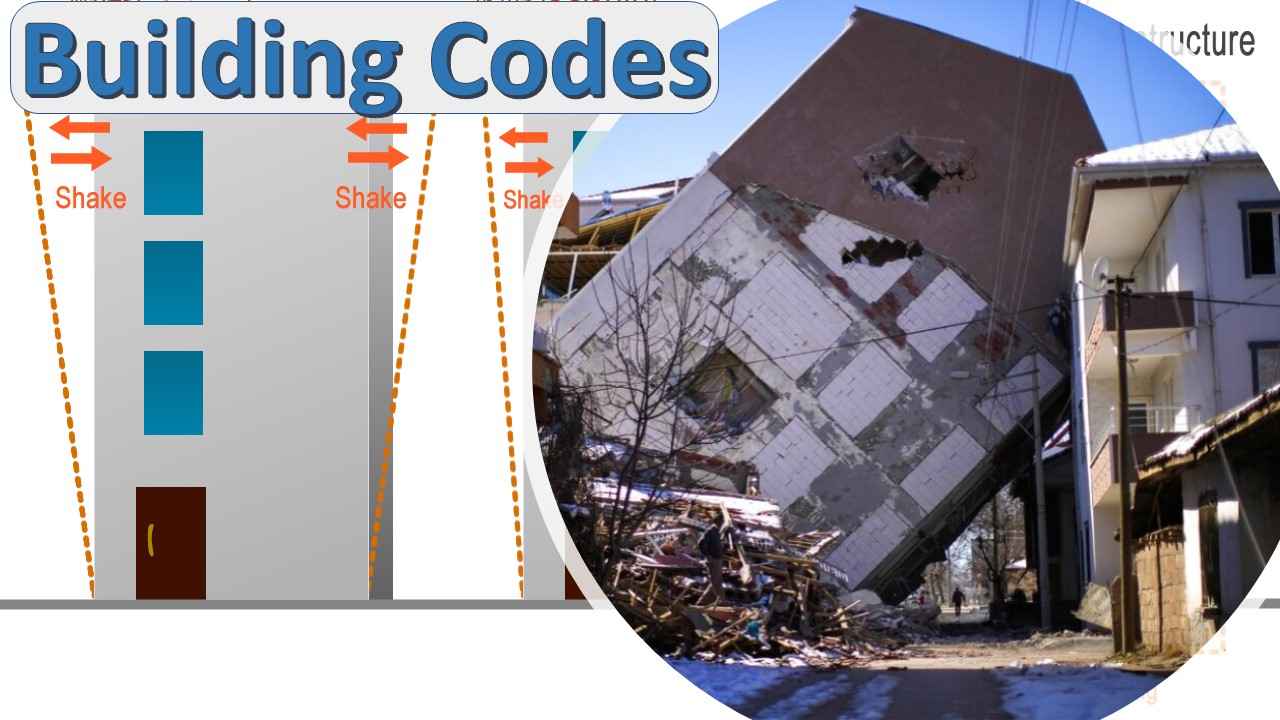Building Codes and Resilience: Case Studies from Earthquake-Prone Regions
- By
- Pooja |
- December 26, 2023 |
- Civil Engineering, Building/ Structure Engineering,

Table of Contents
The Loma Prieta Earthquake and the Evolution of Building Codes in California
The Christchurch Earthquake and New Zealand's Resilience Efforts
The Lessons from the Great East Japan Earthquake
Earthquake-Resilient Construction in Nepal
Retrofitting Historic Buildings in Istanbul
Innovations in Seismic Engineering
The Role of Public Awareness and Education
Ongoing Challenges and Future Developments
Building codes play a pivotal role in ensuring the safety and resilience of structures in earthquake-prone regions. These codes are designed to provide guidelines for construction, ensuring that buildings can withstand seismic forces and minimize the risk of damage or collapse during an earthquake. In this blog, we will explore the importance of building codes in earthquake-prone regions through case studies from different parts of the world.
The Loma Prieta Earthquake and the Evolution of Building Codes in California
The Loma Prieta earthquake in 1989, centred in the San Francisco Bay Area, was a significant event that shaped building codes in California. The earthquake caused widespread damage, including the collapse of the Cypress Street Viaduct in Oakland, highlighting the need for stronger seismic regulations. Following the earthquake, California updated its building codes, introducing stricter seismic standards. These new codes required retrofitting of older buildings and improved construction practices to enhance earthquake resilience.
The Christchurch Earthquake and New Zealand's Resilience Efforts
In 2010 and 2011, a series of devastating earthquakes struck Christchurch, New Zealand. The destruction caused by these earthquakes prompted New Zealand to reevaluate and strengthen its building codes. The country introduced the Building Act 2004, which included more stringent seismic provisions, mandatory seismic assessments, and earthquake-prone building identification. These measures aimed to enhance the resilience of buildings and infrastructure in the face of future earthquakes.
The Lessons from the Great East Japan Earthquake
The Great East Japan Earthquake and tsunami of 2011 was one of the most powerful earthquakes in recorded history. Japan's strict building codes and advanced engineering practices were put to the test, and the results were remarkable. Most modern buildings and infrastructure withstood the shaking, minimizing casualties. The earthquake highlighted the importance of robust building codes, innovative engineering, and public awareness in earthquake-prone regions.
Earthquake-Resilient Construction in Nepal
Nepal, nestled in the Himalayas, is highly susceptible to seismic activity. The devastating earthquake of 2015, with its epicentre in Gorkha, brought attention to the need for better building codes and construction practices. In response, Nepal adopted the National Building Code of Nepal in 2015, which emphasizes earthquake-resistant construction techniques and materials. NGOs and international organizations have also supported earthquake-resilient reconstruction efforts in the country.
Read More:
Retrofitting Historic Buildings in Istanbul
Istanbul, Turkey, sits on a seismically active region known as the North Anatolian Fault. The city is home to numerous historic buildings, making earthquake resilience a significant challenge. In recent years, Istanbul has initiated a comprehensive retrofitting program to strengthen its older structures while preserving their cultural heritage. Building codes have been adapted to accommodate these retrofitting efforts, ensuring the city's resilience in the face of seismic threats.
Innovations in Seismic Engineering
Advancements in seismic engineering have played a pivotal role in improving earthquake resilience. These innovations include base isolators, which allow buildings to move independently from ground motion and dampers that absorb seismic energy. The incorporation of these technologies into building codes has increased the capacity of structures to withstand earthquakes.
The Role of Public Awareness and Education
Building codes alone cannot guarantee earthquake resilience. Public awareness and education are vital components of any seismic resilience strategy. Communities in earthquake-prone regions must be educated about the risks and preparedness measures. Building codes often include provisions for mandatory earthquake drills and the dissemination of earthquake safety information to the public.
Ongoing Challenges and Future Developments
While significant progress has been made in earthquake-prone regions to improve building codes and seismic resilience, challenges persist. One challenge is the retrofitting of existing buildings. Many older structures do not meet current seismic standards and require costly upgrades to become earthquake-resistant. This process often involves striking a balance between preserving historical architecture and enhancing safety.
Moreover, monitoring and enforcement of building codes are essential. Regular inspections and adherence to seismic regulations ensure that new constructions meet the required standards. Enforcement agencies play a crucial role in maintaining the integrity of building codes.
In the future, advancements in technology, such as real-time structural health monitoring systems, may help assess the condition of buildings during and after an earthquake. These systems can provide valuable data to improve building codes and enhance emergency response efforts.
Additionally, research into earthquake prediction and early warning systems continues to progress. While we cannot predict earthquakes with pinpoint accuracy, early warning systems can provide seconds to minutes of advance notice, allowing people to take protective actions.
Conclusion
Building codes and earthquake resilience are ongoing endeavours in regions susceptible to seismic activity. By learning from past events and adopting stricter regulations, these areas are better prepared to withstand earthquakes and minimize the associated risks. Retrofitting, public awareness, and innovative technologies are essential components of these efforts. The future promises more robust building codes, improved construction practices, and enhanced earthquake prediction and warning systems, ultimately making communities in earthquake-prone regions safer and more resilient. Building codes, coupled with proactive measures and the engagement of local communities, serve as the foundation for a more earthquake-resistant future.
Please feel free to like, share and comment.
Admin, gcelab.com
Please see our Pillar Post to know why we founded gcelab.com.
Read More:

Pooja
Founder at gcelab.com, Pooja is an Entrepreneur unlocking human potential. Working in the Principles of Lean Start-up, Pooja believes in Transparency and User Happiness the most. Pooja’s background in teaching gives her a sophisticated grasp on even the most tedious aspect of course building. She is passionate about people who believe that good is not enough.

